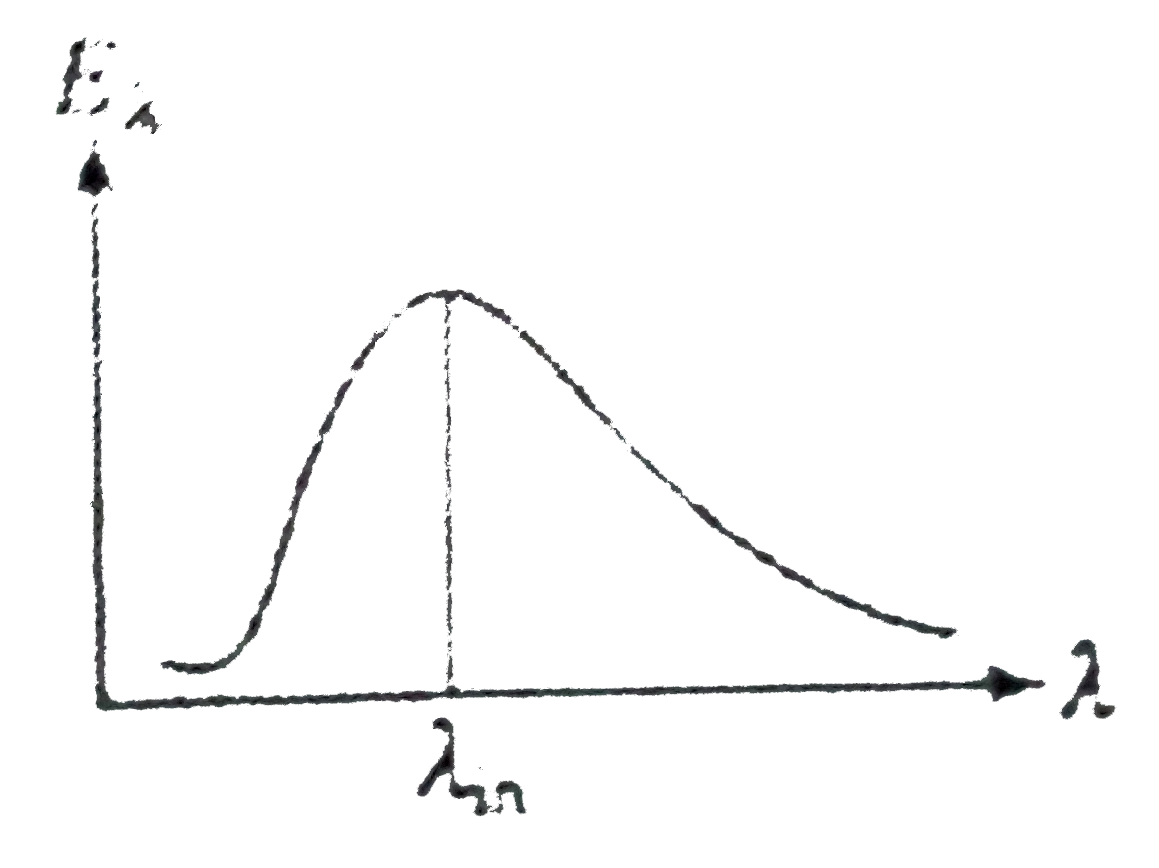The radiations emitted by the sun are analyzed and the spectral energy distribution curve is plotted. as shown. The radius of the sun is R, the earth is situated a distance 'd' from the sun. Treat the sun as perfectly black body which radiates power at constant rate fill till its store of hydrogen gets exhausted. (Stefan's constant =σ, Wien's constant =b, speed of light =c)

Assume the sun produces energy only by nuclear fusion of hydrogen nuclei and the fraction of nuclear mass of hydrogen that can be converted to energy is η. How long will the sun keep on emittied the energy if the mass of hydrogen at present in Sun's core is m?
ηmc2λ4mπR2σb4
ηmc2λ4m4πR2σb4
ηmc2λ4m2πR2σb4
2ηmc2λ4mπR2σb4
Step by step video & image solution for The radiations emitted by the sun are analyzed and the spectral energy distribution curve is plotted. as shown. The radius of the sun is R, the earth is situated a distance 'd' from the sun. Treat the sun as perfectly black body which radiates power at constant rate fill till its store of hydrogen gets exhausted. (Stefan's constant = sigma, Wien's constant =b, speed of light =c) Assume the sun produces energy only by nuclear fusion of hydrogen nuclei and the fraction of nuclear mass of hydrogen that can be converted to energy is eta. How long will the sun keep on emittied the energy if the mass of hydrogen at present in Sun's core is m? by Physics experts to help you in doubts & scoring excellent marks in Class 11 exams.
Updated on:21/07/2023Topper's Solved these Questions
- TRANSMISSION OF HEATBOOK - CENGAGE PHYSICS ENGLISHCHAPTER - TRANSMISSION OF HEATEXERCISE - Fill in the blanks type
6 Videos
- TRANSMISSION OF HEATBOOK - CENGAGE PHYSICS ENGLISHCHAPTER - TRANSMISSION OF HEATEXERCISE - Single Corrct Answer
7 Videos
- TRANSMISSION OF HEATBOOK - CENGAGE PHYSICS ENGLISHCHAPTER - TRANSMISSION OF HEATEXERCISE - Multiple Correct Answer Type
2 Videos
- THERMODYNAMICSBOOK - CENGAGE PHYSICS ENGLISHCHAPTER - THERMODYNAMICSEXERCISE - 24
1 Videos
- TRAVELLING WAVESBOOK - CENGAGE PHYSICS ENGLISHCHAPTER - TRAVELLING WAVESEXERCISE - Integer
9 Videos
Similar Questions
The radiations emitted by the sun are analyzeed and the spectral energy distribution curve is plotted. as shown. The radius of the sun is R, the earth is situated a distance 'd' from the sun. Treat the sun as perfectly black body which radiates power at constant rate fill till its store of hydrogen gets exhausted. (Stefan's constant =σ, Wien's constant =b, speed of light =c)

If the earth is at a distance 'd' from the sun the intensity of light falling on the earth (called solar constant S) is
View SolutionThe surface temperature of the sun is T0 and it is at average distance d from a planet. The radius of the sun is R. The temperature at which planet radiates the energy is
View Solution
Knowledge Check
Light from the sun reaches the earth approximately in
A5sB50sC500sD0.5sThe mean distance from Saturn to the sun is 9 times greater than the mean distance from Earth to the sun. how long is a Saturn year?
A18 Earth yearsB27 earths yearsC81 earth yearsD243 earth years
The spectral energy distribution of the sun has a maximum at 4754Å. If the temperature of the sun is 6050 K, what is the temperature of a star for which this maximum is at 9506Å?
View SolutionPower emitted per unit area of a black body is R watt/m2. At what wavelength will the power radiated by black body be maximum is stefan's constant is σ and Wien's constant is b then.
View SolutionCalculate the temperature at which a perfect black body radiates at the rate of 1Wcm−2 , value of Stefan's constant,
σ=5.67×10−5Wm−2K−8
View SolutionThe time of revolution of planet A round the sun is 8 times that of another planet B. The distance of planet A from the sun is how many times the distance of B from the sun
View SolutionThe dimension of σb4 (where σ is Stefan's constant and b is Wien's constant) are [ML4T−3] is it true.
View SolutionThe largest and the shortest distance of the earth from the sun are r1 and r2, its distance from the sun when it is at the perpendicular to the major axis of the orbit drawn from the sun
View Solution
